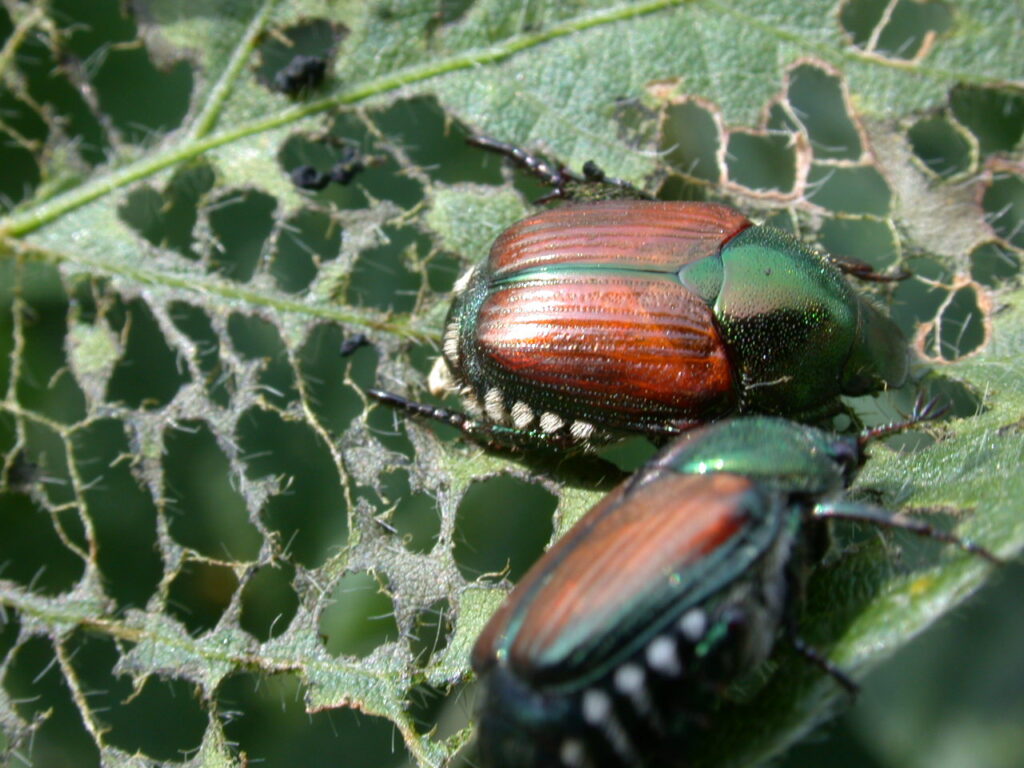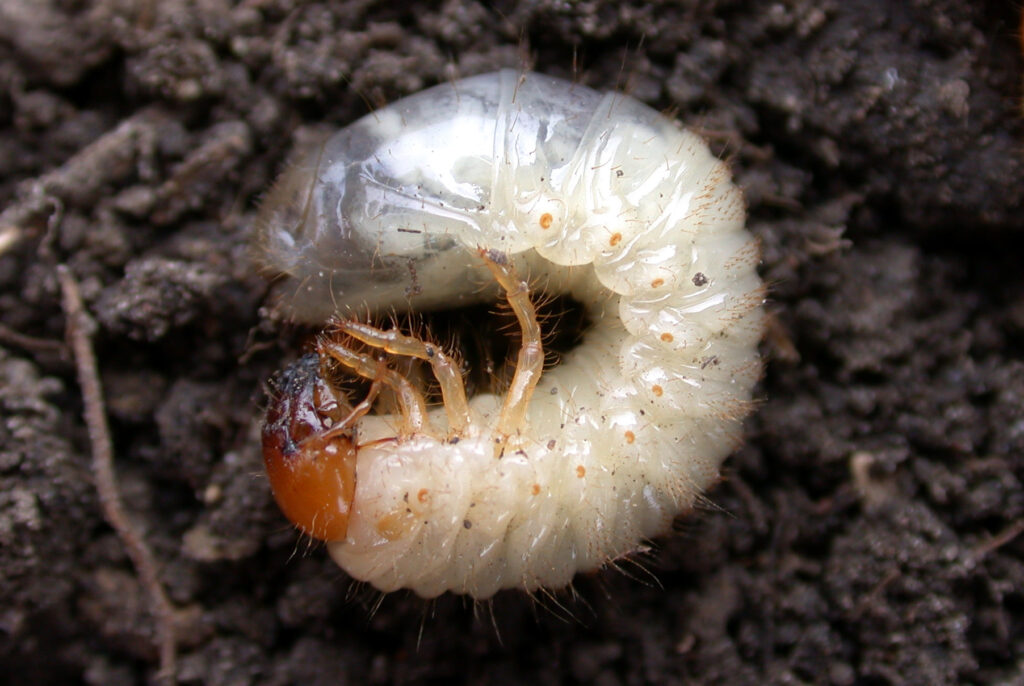A familiar and dreaded sight of any home gardener is to find their rose bushes in a state of disrepair. Leaves skeletonized, flowers destroyed, and the remains crawling with iridescent green and brown beetles. This is the result of a Japanese beetle infestation. Japanese beetles were introduced to the United States around the turn of the 20th century and have since been a significant pest, causing economic damage to crops and ornamental plants alike. They measure 8-11 mm in length and can be identified easily by the six tufts of white pubescence on either side of their abdomen (Figure 1).

Figure 1. Japanese beetle adults on a soybean leaf and the resulting damage (leaf skeleton) from their feeding (Photo by John Obermeyer).
Japanese beetles are generalist herbivores, meaning that they feed on a variety of plants. Still, they tend to prefer Rosales, an order of plants that includes roses, brambles, apples, and stone fruits. These beetles can damage various parts of the plant. In the larval stage (Figure 2), Japanese beetles dwell in the soil and can cause extensive damage to turfgrasses. In the adult stage, they chew many holes in the leaves, often going as far as skeletonizing the leaf, meaning that all that remains of the leaf are the major veins. They can completely remove flowers from plants (a particular problem in ornamentals) and will feed on fruit. Soft berries can be entirely removed, while larger fruits may only have small craters of damage.

Figure 2. Japanese beetle larva, which resides in the soil and feed on grass roots (Photo by John Obermeyer).
Japanese beetles are a very successful invasive species, so avoiding them entirely is difficult, but there are steps you can take to mitigate their damage. One way to do this is to deploy pheromone-baited traps. Many commercial products are available for trapping Japanese beetles. Most consist of a funnel fixed atop a collection container with a lure impregnated with the sex pheromone of the female beetle. BEWARE, while effective, a common complaint is that the pheromone lure acts too well and can draw in beetles from the surrounding landscape. You will often hear us recommend that your neighbor get a trap (to pull the population away from you). Planting a trap crop is another option. Geraniums, for example, are toxic to Japanese beetles, but they will still eat geranium flowers. This causes paralysis in the beetle, which increases their risk of predation and desiccation. Using preferred plants as a trap can also help concentrate the population if you resort to pesticide applications. Basil is one that is particularly attractive. Hand picking and dropping them in a bucket of soapy water is effective in small gardens/plantings. As a last resort, insecticide sprays containing pyrethroids, neonicotinoids, or diamides can be applied. As always, follow the label on any product. The label is the law.